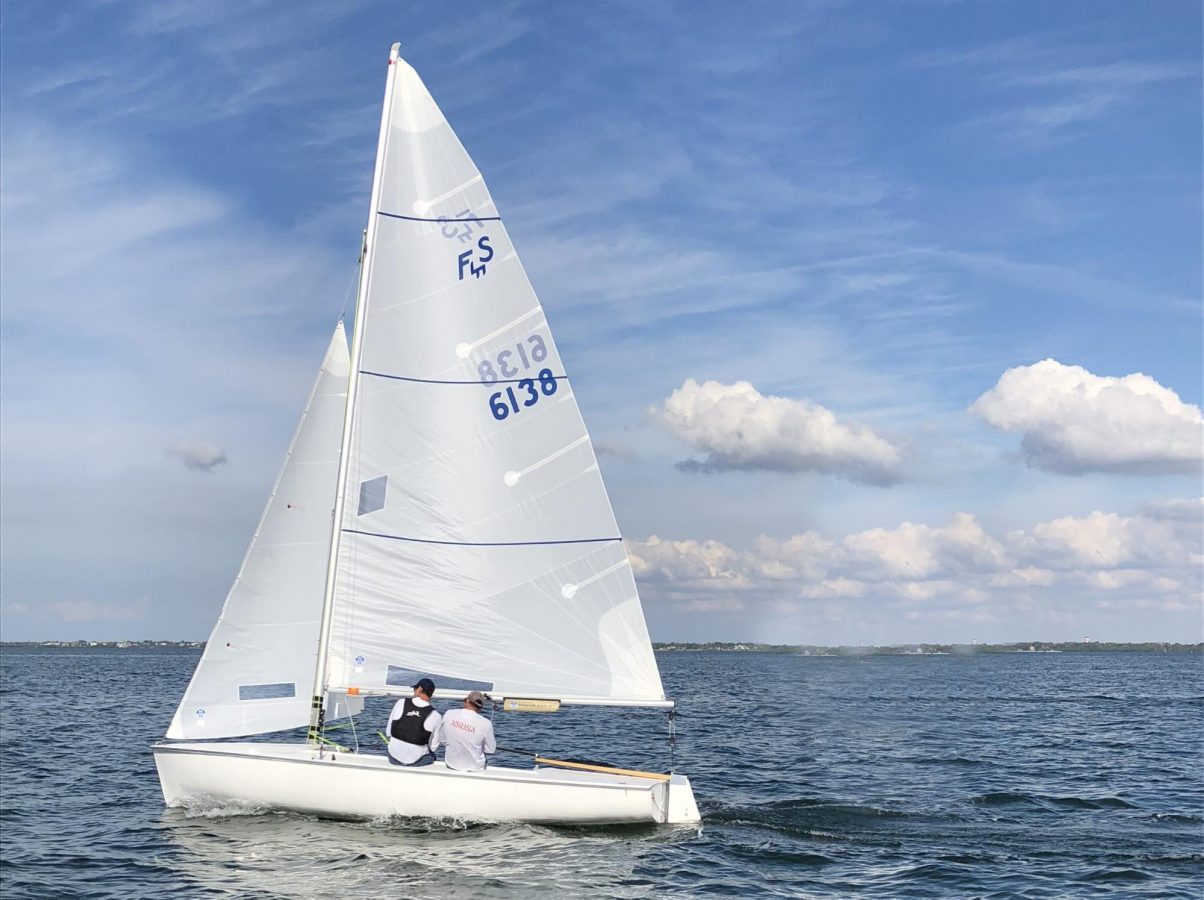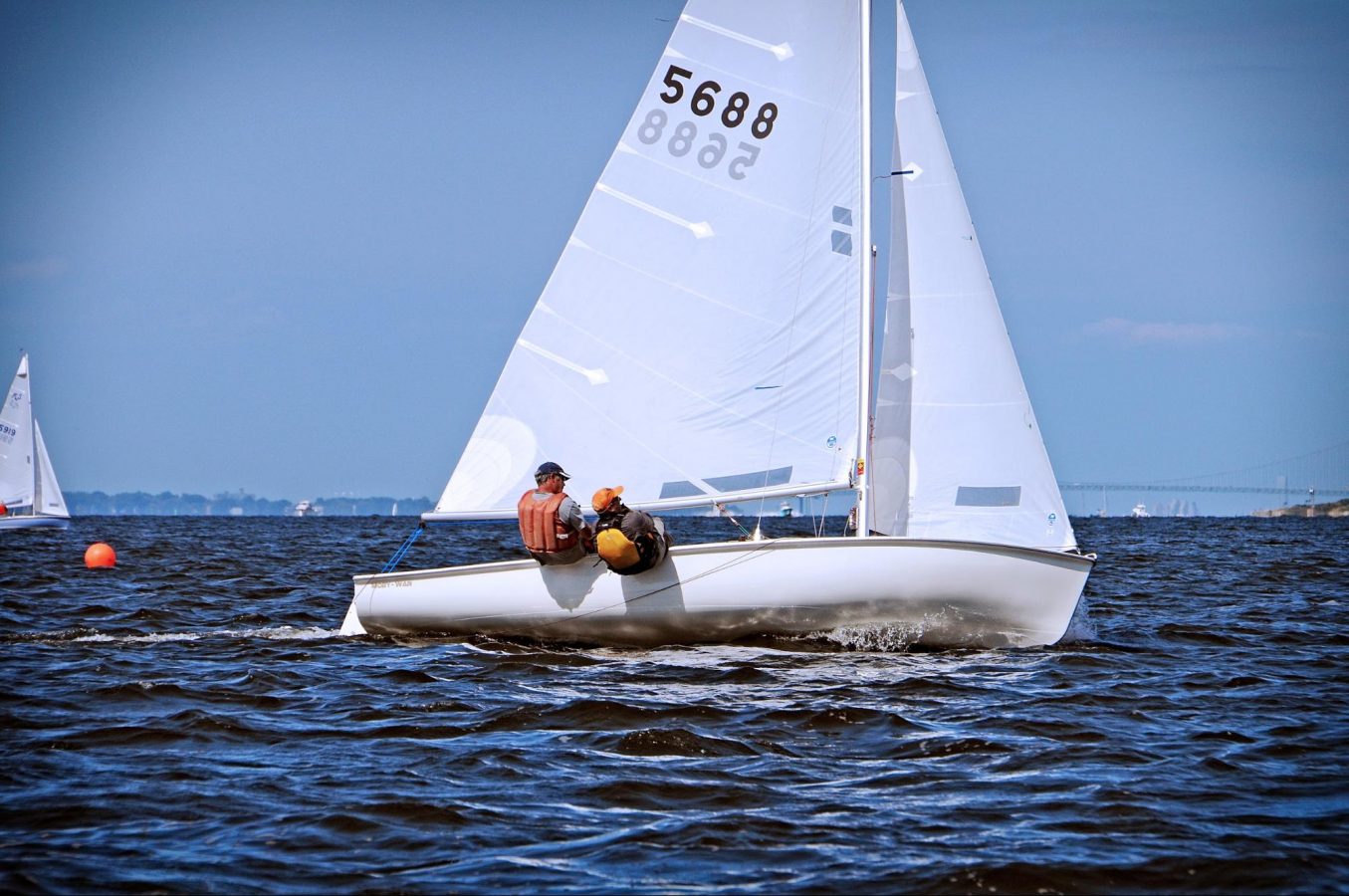SPEED READING: GET FAST AND STAY FAST
GET FAST AND STAY FAST
Important factors that affect your Flying Scot boat speed

We’ve all read it a million times from all of the sport’s top performers – “boat speed is king,” “the key to winning consistently is boat speed,” “you have to have top boat speed to win”…. There’s a lot of ways to say it… But how do we achieve it? THAT is the question.
In the Flying Scot, one of the most important factors for boat speed both upwind and downwind is the center board engagement. When sailing upwind we need to accurately trim the sails, put the boat on the right heading, and get the body weight in the right spot so that the boat can get going fast enough to allow the centerboard to start working and achieving maximum lift. If any one of those three trims are off, the boat will experience some sort of stall which will decrease lift of the board and increase the distance between us and the fast guys!
The generic tip is “speed before height”. This is a simple concept that most of us understand – but it’s the execution of this technique that can be difficult. It all starts with positioning. The boat has to be in a place where you are able to ease the sails a bit, put the bow down, and let it rumble. If you are sailing with someone to leeward, you aren’t able to make this move and instead you are stuck trying to live in high mode which can be very unforgiving. It’s crucial to make every effort to make tactical decisions that keep people away from your leeward hole. Make sure that you have a big hole to leeward of you right after the start.
A couple keys to achieve that are:
1. Use a “high kill” in the last minute where you get the boat to coast at head to wind (without losing flow/steerage). If the boat to leeward of you isn’t matching, then that hole is getting bigger.
2. Accelerate the boat in the last 10-15 so that you can ultimately “pull the trigger” at 2 or 3 seconds which allows the boat to be already close-hauled at full speed at the gun. Of course this requires accurate knowledge of where the line is, but if you can already be full upwind with the center board working when the gun goes off, you are going to have plenty of room to leeward of you to let the boat rumble.
Another opportunity to give yourself a bigger hole to leeward of you on the racecourse is in a situation where you know you are likely to get lee-bowed by a competitor. This can happen if you are out on the edge of the course near a layline most likely.
If you know you are likely to get lee-bowed by a competitor coming across on the other tack, put your bow down at them. Make it clear from 5-10 boat lengths away that it is your intention to duck them by aiming your bow at their transom.
This will force them to either take the cross – which you are fine with in this tactical situation – or tack early. As soon as you see them start their tack, you trim the sails back in and put the bow back up to your close hauled course which leaves them an extra boat length or two to leeward of you which should be enough for you to comfortably hold your lane. Plus, you will be coming at them with a click more boat speed since you are bow down, which should have you with an even better lane after their tack
Developing the feel on the helm and in the hull so that you can sense when the center board is fully engaged is the hard part.
It can only come from time on the tiller, and sailing in a straight line while experimenting with the edges of performance. But that’s where the fast guys really get away – they are constantly making very slight adjustments to heel angle, sail trim, and their course so that they can get the board to maximum lift and then try to take that lift as high as they can before the boat stalls.
When they feel the boat is on the brink of a stall, they adjust again to re-engage the board and repeat the process. You can think of it like executing very gradual “S-Turns” all the way up the beat – bow down and sails eased with body weight pressing on the rail to get the boat rumbling, and then bow slightly up with sails trimmed hard to turn that speed into height. That’s the magic!
Remember, a fully engaged center board will give you height without forcing you to actually point the boat higher. In fact, the boats gaining height might have their bows further from the true wind angle – but since the board is providing lift, they are still climbing to windward!
Practice makes perfect, so get out on the water and sail upwind (maybe even with your eyes closed) and really try to hone in on this feel. Boat speed turns into good tactics, and the combination is what will put you at the top of the podium!
Contact Zeke Horowitz for additional questions on making your Flying Scot sail faster.
Learn more about North’s fast Flying Scot sails.




























